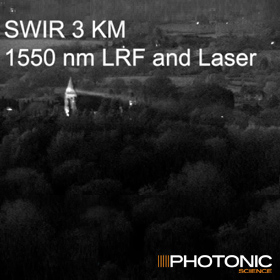Laser Detection & Range Gating
Fundamentally, laser gated imaging uses laser pulses in combination with a synchronised imaging gated camera.
The laser pulse serves as a source of light to illuminate the scene. Laser pulses are emitted from the source, and pulse durations range from as brief as a few nanoseconds to microseconds.
The light pulse is then absorbed or reflected by the surrounding surfaces present. Part of the reflected light is sent back toward the imaging sensor and it carries information about the scene (like distance and reflectivity). Photons that are reflected at different ranges, arrive at different points in time.
The imaging sensor or camera only “opens the gate” (i.e. starts the exposure) after a certain time and for a very short period. Therefore, the sensor is not affected by unwanted scattered photons or other, parasitic, light sources. Only the photons that arrive within the right period contribute to the resulting image. The time delay or gating delay determines the position of the range gate in the scene, and the camera gating time or exposure time will define the depth of the viewed scene.
We Recommend...
Intensified CCD & CMOS Camera Cooled VGA SWIR InGaAs Camera

Contact Us
22 Theaklen Drive,
Saint Leonards-on-sea,
TN38 9AZ,
United Kingdom


